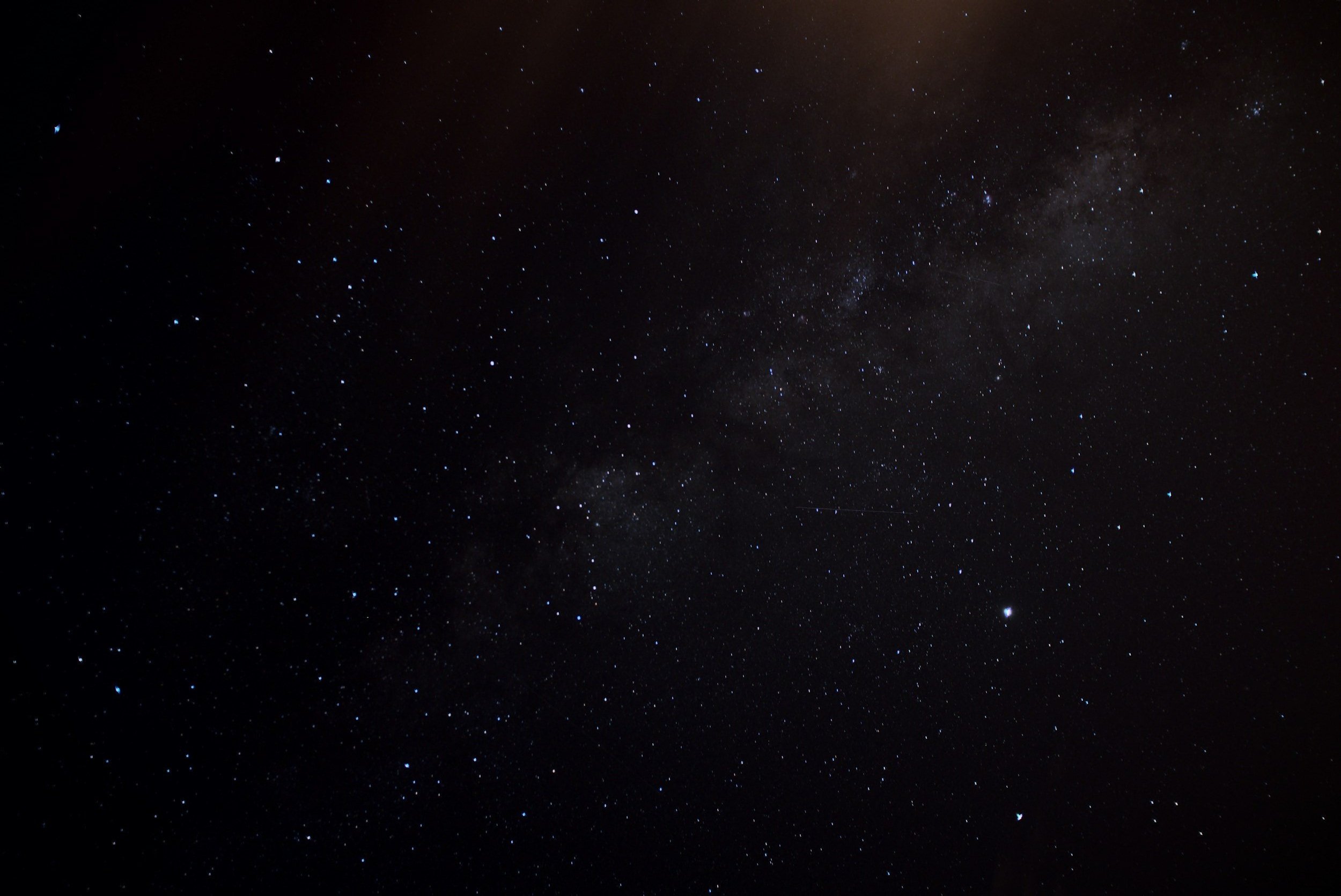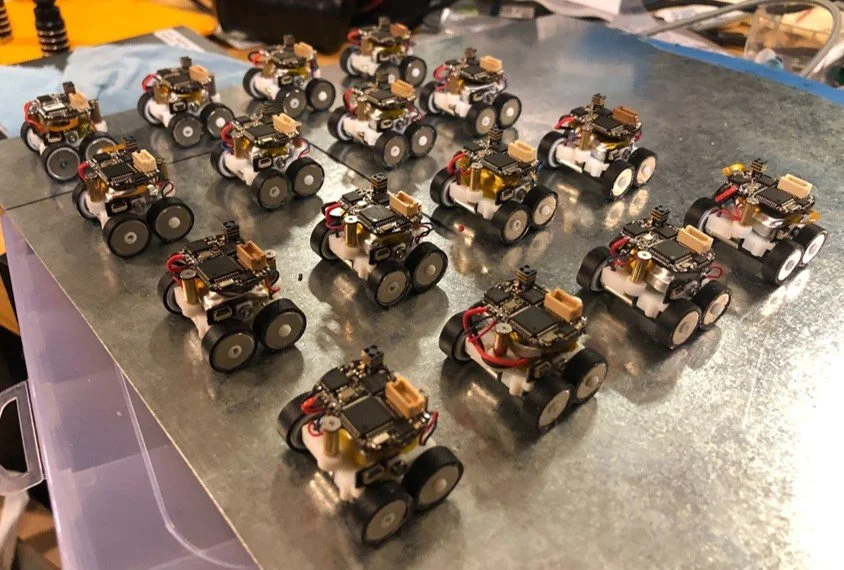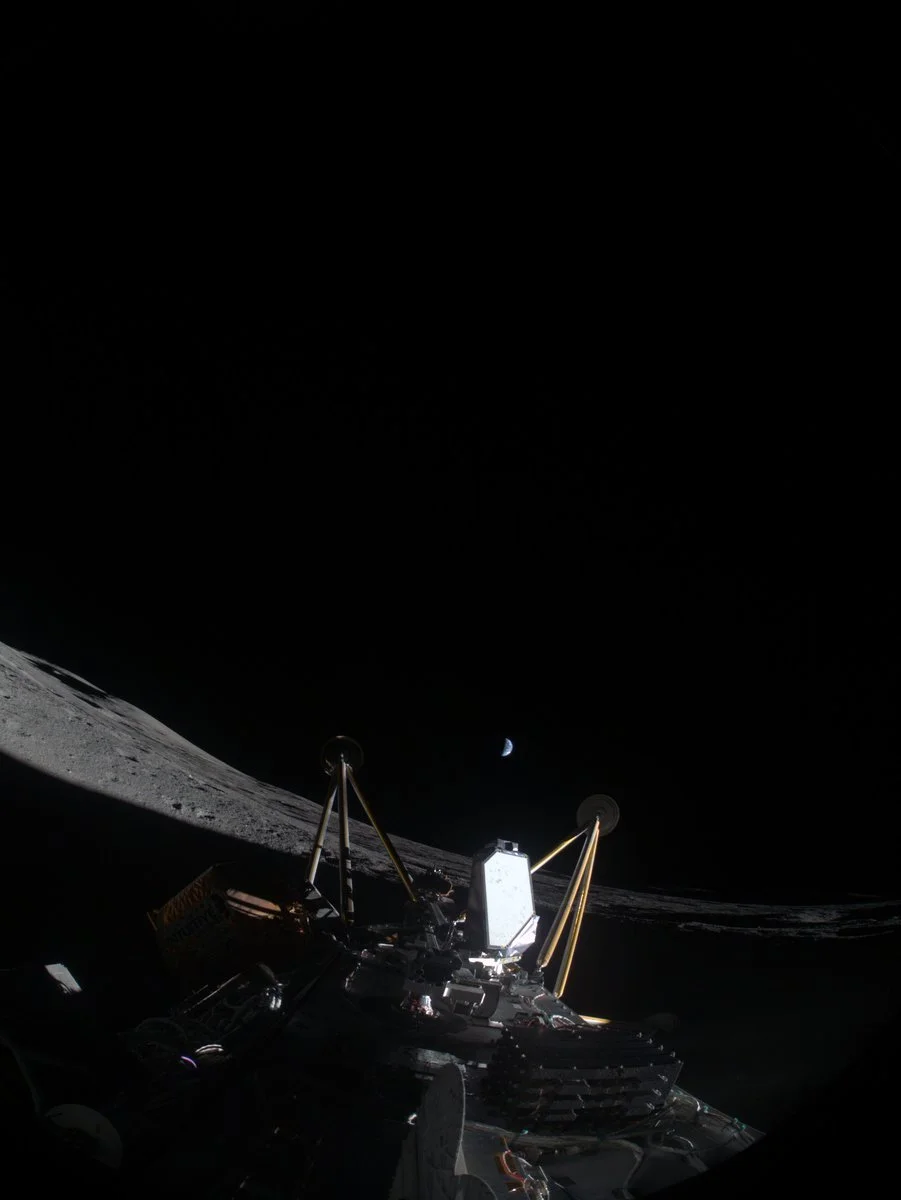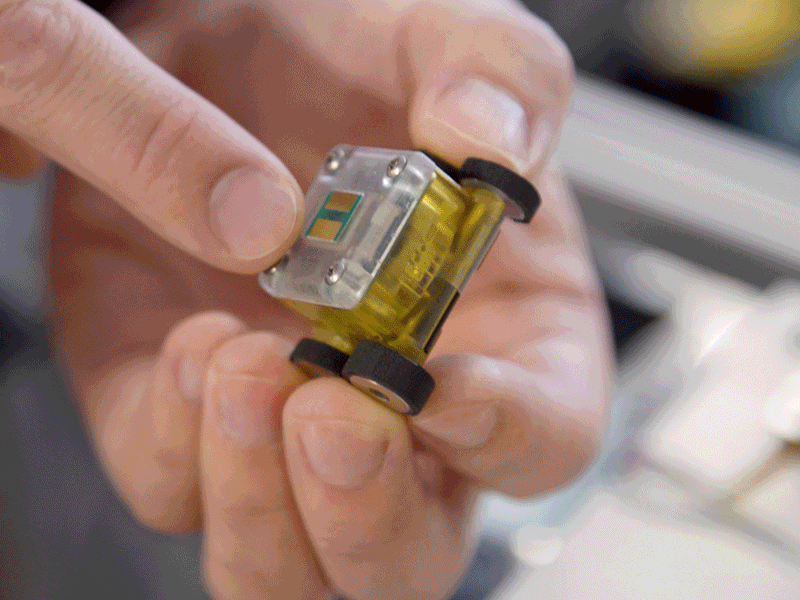
On March 6, the IM-2 lunar mission landed on the surface of the moon, near the south pole, carrying three payloads developed by Media Lab researchers and collaborators—a digital 3D camera; a tiny rover we've dubbed the AstroAnt; and a collaborative art project called HUMANS.
The lander, named Athena, landed 250 meters from its intended landing site in the Mons Mouton region of the lunar south pole, inside a crater. This was the southernmost lunar landing and surface operations ever achieved.
Images downlinked from the lander on the lunar surface confirmed that Athena was on her side, preventing systems from recharging. Some of the research payloads on board were able to collect and transmit data before the systems ran out of power; we were able to transmit a command for our camera payload and got temperature data for both the camera and the AstroAnt in transit. The mission of the HUMANS project was to get to the lunar surface, which it did.
Although we are disappointed that we will be unable to carry out all of the planned experiments, we learned a great deal and are already looking forward to implementing that knowledge the next time we participate in a lunar launch.
This cross-MIT collaboration was led by the Media Lab’s Space Exploration Initiative and developed with MIT AeroAstro and MIT.nano. As noted above, it included the first digital 3D camera deployed on the moon’s surface, a collaboration with NASA Ames; AstroAnt, a collaboration with Media Lab member company Castrol; and Humanity United with MIT Art and Nanotechnology in Space (HUMANS), a nano-etched disc encoded with the voices of people all around the world, sharing their thoughts on the meaning of space for themselves and humanity.


Replay the Live Feeds


Learn More


Meet the Crew

Payloads
-

AstroAnt Payload
-

Camera Payload
-

HUMANS Payload

























